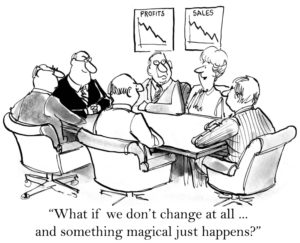New E-book, Essays on Diversity and Inclusion in the Fire Service, now available for Kindle or PDF file download!
By: Robert Avsec, Executive Fire Officer
Consultant: One who is hired to tell you what time it is, using your watch.–Anonymous
The organizational climate in the Fairfax County (Va.) Fire Rescue Department is not good according to an assessment of the organizational culture and attitudes within the department completed by a third-party. The department had commissioned the study following the suicide of Firefighter/Paramedic Nicole Mittendorff last year, a suicide that’s been attributed to on-line bullying by some of her “brother” firefighters in the department.
My fire service colleague and fellow contributor to FireRescue1.com, Linda Willing, recently had another powerful piece of prose published where she provided some analysis for the report. Willing’s assessment was that the report, while including many valuable insights and recommendations, fell short when it came to really dealing with the primary issue: personal accountability.
Accountability is a term frequently used within organizations, and one that I’ve found is frequently misused just as frequently. It’s often used in the context of ensuring that someone faces consequences for something they did wrong. In reality, accountability is not a stand-alone term; it is best used in conjunction with its sibling terms, responsibility and authority.
The fire service is no different than any other organization in that we have policies, procedures, rules and regulations that are designed (or should be) to guide the behaviors of individuals within the organization. Those “governing documents” provide the foundation for any organization to be effective and efficient in its operations.
Organizational Culture in the Fire Service
But organizations are made up of human beings. And the behavior of human beings is guided more by the culture in which they exist. The Merriam Webster on-line dictionary provides several definitions of culture:
- The integrated pattern of human knowledge, belief, and behavior that depends upon the capacity for learning and transmitting knowledge to succeeding generations
- The customary beliefs, social forms, and material traits of a racial, religious, or social group; the characteristic features of everyday existence shared by people in a place or time <the fire service culture>
- The set of shared attitudes, values, goals, and practices that characterizes an institution or organization <a fire service culture focused on risk-taking>
- The set of values, conventions, or social practices associated with a particular field, activity, or societal characteristic <Changing the risk-taking culture of the fire service will take time>
Much is being written and discussed about the fire service and its culture of risk-taking and the influence of that  culture on firefighter deaths and injuries. But there is also the culture of the firehouse, and that’s the culture that’s influencing the inappropriate behaviors, on and off the job, that are resulting in careers being ruined, lawsuits being filed, and in the worst cases, firefighters taking their own lives.
culture on firefighter deaths and injuries. But there is also the culture of the firehouse, and that’s the culture that’s influencing the inappropriate behaviors, on and off the job, that are resulting in careers being ruined, lawsuits being filed, and in the worst cases, firefighters taking their own lives.
And I’m not just talking about a suicide like that of Firefighter/Paramedic Mittendorf. I’m also referring to those firefighters who are taking their lives because the mental stresses and strains associated with the job and their own inability to seek professional help because of the cultural stigma associated with openly seeking help. The job’s tough. Firefighters are tough. Anybody who’s not tough is weak.
Changing the organizational climate and the culture
For starters, we must get rid of the “go along, to get along” component of the firehouse culture. The Fairfax County report is only the latest report where it was found that “people knew, but nobody did anything to stop it.” Why do “good” people not do the “right thing” when confronted with behavior or activities that they know “in their gut” to be wrong? Because nobody wants to be “that guy” in the firehouse.
I’m confident that many fire departments have language like this in their policies and procedures regarding behavior in the firehouse: Every member has the responsibility to ensure that [Fill in the name of the department] provides a workplace that’s free of harassment based on race, sex, religion or sexual orientation.
They have the responsibility (Great!) but do they have the authority to fulfill that responsibility? If they do, are they held accountable when they don’t carry out their responsibility?
What is that authority? It means that from the newest firefighter in the organization—right on up the ranks to the fire chief—individual members know and understand that they have the authority to make decisions, to stand up to bad behavior, to be an ally to someone who is targeted.
And just as importantly, the consequences for not exercising that authority
A formal policy and an online class on bullying are not likely to change much of anything when practices are deeply embedded in organizational culture and expectations.–Linda Willing
How Can We Make that Change?
If fire departments want to make meaningful changes in their organizational culture, more specifically change in the firehouse culture, their leadership must start by accepting the fact that the culture doesn’t change because of new policies, procedures or training.
Most of us think of progress or improvement as the spread of enlightened thinking and the expansion of morality. We believe that to change the culture of a fire department we can do it by appealing to the sense of right and wrong in our people, i.e., “awaken their better angels.”
But if we really want to make meaningful and lasting improvements in the fire service culture, we may gain more
ground by stopping our efforts at tapping into people’s desire to be good or virtuous. Rather, we should take advantage of something less lofty, and quite frankly harder to admire: an individual’s powerful drive to “be normal.”
In the career fire service, nobody has more control over what is “normal” in the firehouse environment than the company officer, aka, the first-line supervisor. Developing such an attitude—that everyone has a responsibility and the authority to speak up when they see something wrong—is not just needed to halt intolerant behavior, sexual harassment, and other people issues in the firehouse.
It’s a key cultural element that must change for the fire service to eradicate unwanted behavior on while responding to calls (not wearing seatbelts) and on the fireground (unmanaged risk-taking). But, as Willing wrote in her article:
Members need to know not only what to do, but how to do it. And they need to feel safe and supported in making those choices.
This is especially true for officers. Many company officers are promoted based on technical knowledge and are largely unprepared for their role in defusing conflict and setting the tone within a team.
They may have good intentions, but poor skills can sink their best efforts. Even if they want to do the right thing, they may feel they won’t be supported by their crews, their peers or their supervisors if they make hard choices.
So, changing this one aspect of the fire service culture can have positive implications for not just eliminating intolerance in the workplace, but for a host of other needs as well. Most departments I know of are doing everything they can to recruit and hire the best people possible for the job. But if we don’t have a culture that supports people speaking up and resolving conflicts and doing what’s right every day, how will we ever take advantage of their skill, talents, and abilities?
 Fire & EMS Leader Pro The job of old firefighters is to teach young firefighters how to become old firefighters!
Fire & EMS Leader Pro The job of old firefighters is to teach young firefighters how to become old firefighters!

